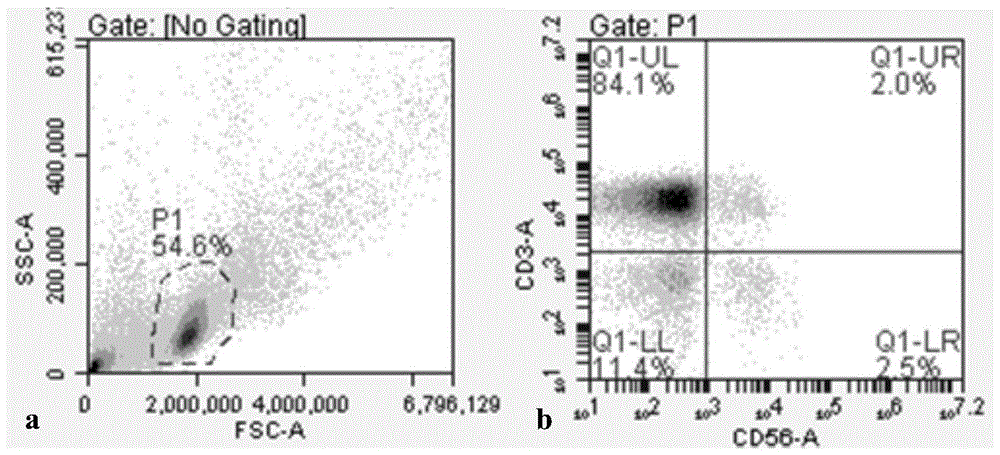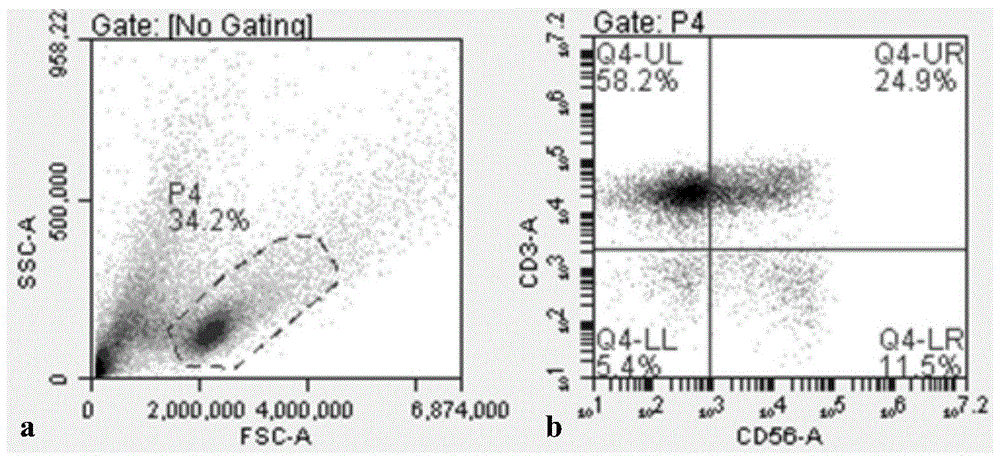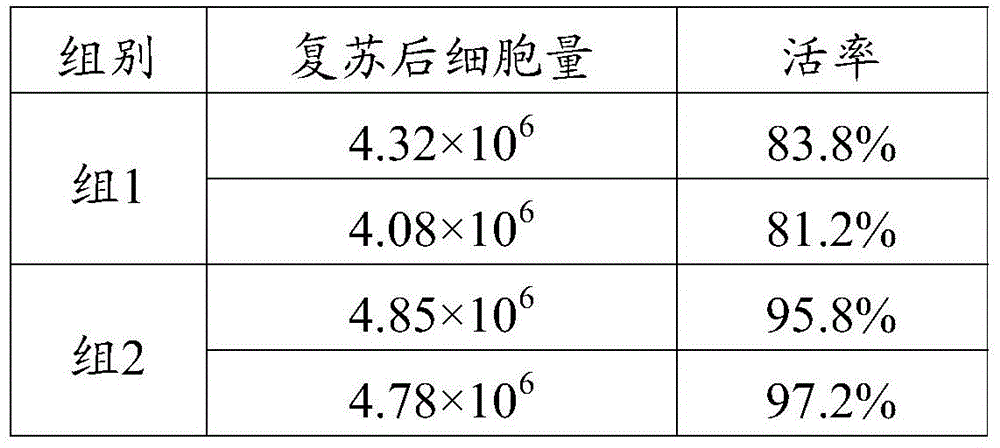Freezing method of immune cells
A cryopreservation method and immune cell technology, applied in the field of cell biology, can solve the problems of easy aging of cells, low cell viability, and damage of cells by ice crystals
- Summary
- Abstract
- Description
- Claims
- Application Information
AI Technical Summary
Problems solved by technology
Method used
Image
Examples
Embodiment 1
[0024] Example 1: Isolation of mononuclear cells
[0025] 1. Draw 20mL of peripheral blood, add it to a 50mL centrifuge tube, and centrifuge at 700g for 10min;
[0026] 2. Draw 8-9mL of the upper layer of plasma to a 15mL centrifuge tube for later use, and add 2 times the volume of normal saline to dilute the lower layer of blood;
[0027] 3. Take a new 50mL centrifuge tube, add 15mL lymphocyte separation medium, and slowly add diluted blood to ensure clear stratification.
[0028] 4. Centrifuge at 700g for 20-30min, and the centrifuge speed drops to zero.
[0029] 5. Extract the middle buffy coat cells to obtain mononuclear cells, add normal saline to wash twice, count, and the cell volume is 2×10 7 -3×10 7 .
Embodiment 2
[0030] Embodiment 2, the immune cell cryopreservation method of the present invention
[0031] 1. Autologous plasma was inactivated at 56°C for 30 minutes, filtered through a 0.22 μm filter membrane, and set aside.
[0032] 2. Prepare cryopreservation solution 1 according to the ratio of DMSO: autologous plasma: X-VIVO15 medium volume ratio of 1:2:2, and pre-cool in a refrigerator at 2-8°C.
[0033] 3. Resuspend mononuclear cells with 2-3mL X-VIVO15 serum-free medium, slowly add the same volume of freezing solution 1 to make 4-6mL cell freezing suspension, divide into 4-6 tubes for freezing, each tube 1mL, frozen storage density: 4×10 6 cell / mL-6×10 6 cell / mL.
[0034] 4. Cool down to -80°C with a programmed cooling device, and transfer to a liquid nitrogen tank for freezing.
Embodiment 3
[0035] Embodiment 3, conventional cryopreservation method
[0036] The cryopreservation solution was prepared according to the ratio of DMSO:FBS:X-VIVO15 serum-free medium volume ratio of 1:2:7, and the mononuclear cells were resuspended in the cryopreservation solution and then frozen in liquid nitrogen.
PUM
 Login to View More
Login to View More Abstract
Description
Claims
Application Information
 Login to View More
Login to View More - R&D
- Intellectual Property
- Life Sciences
- Materials
- Tech Scout
- Unparalleled Data Quality
- Higher Quality Content
- 60% Fewer Hallucinations
Browse by: Latest US Patents, China's latest patents, Technical Efficacy Thesaurus, Application Domain, Technology Topic, Popular Technical Reports.
© 2025 PatSnap. All rights reserved.Legal|Privacy policy|Modern Slavery Act Transparency Statement|Sitemap|About US| Contact US: help@patsnap.com



